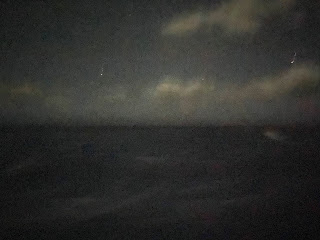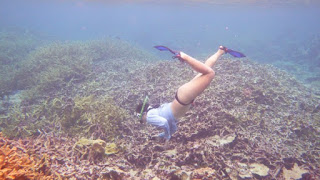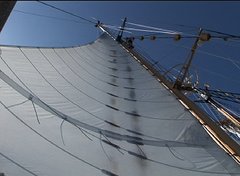Ahoy! And welcome aboard the SSV Robert C. Seamans, which is currently positioned at around 11 degrees N and 158 degrees W on track to our “Aloha 2” waypoint at Swordfish Seamount. I’m currently serving as JWO (Junior Watch Officer) on afternoon watch from 13:00 to 19:00, and I’m responsible for conducting the hourly boat checks we do 24/7 to make sure salad dressing isn’t spilled, the boat isn’t on fire, and that all machinery is in working order.
I start off on the quarterdeck, which is the mustering and community space on deck where we spend most of our time outside. Drive is on helm steering a course ordered of 355 degrees and we’re motor sailing upwind, and North, on a starboard tack.
Barb is camping out by the fishing lines, hoping to catch the famed blue marlin, a mahi mahi, or a yellowfin tuna. Diego’s reading on top of the navigational space on the boat, also called the doghouse or charthouse, and Jan’s laying against the emergency life raft with a cup of coffee in his hand.
We’re sailing at about 8 knots, which is relatively fast for a boat our size. Combined with the rolls and waves of the open ocean, it’s pretty hard to walk, and I stumble around the quarterdeck holding onto the various emergency water jugs, handrails, and poles I can reach. Nothing seems out of the ordinary on the quarterdeck, so I venture down the stairs at the back of the boat to the science deck, the location of the wet and dry lab. The science team has just completed a CTD (Conductivity, Temperature, Depth) hydrocast, and I notice that my fellow B-watchmates are drawing water into glass bottles to measure the pH of a water sample that has been taken from 400m deep in the open ocean! My teammates alert me that all is as normal in the science lab, so I continue walking to the bow of the ship.
Here, Lilah, Jessie, and Regina are getting their workout in, braving waves that crash into the hull of the boat and splash over the railing. I step around their dumbbells and resistance bands to check in with our lookout, Kelly. Kelly stands clipped in at the very front of the Seamans, scanning the horizon for other boats, squalls on the horizon, and fishing buoys. Bow lookout on the Seamans offers an almost-perfect 360 degree view of the open oceanic desert we’re passing through, and is also one of the best places on the boat to sing your heart out. Kelly describes the schools of flying fish she saw to me, and as I make my way back to the quarterdeck, I can hear her rendition of Justin Bieber’s “Baby” behind me.
Everything seems to be normal on deck, so I make my way downstairs, through the charthouse, and into the salon. The salon, or dining space, on the Seamans is simultaneously the place we eat, do project work, take meetings, and socialize on the boat. Maitri, Karthik, Mia, and Chinmay play anagrams in the corner of the salon on top of a gimbled table that tilts up and down depending on the rolls of the boat. Bread sits proofing on the largest table, a sign that we’ll be having a delicious dinner later that night. I check in with Ashley, the boat’s steward, in the galley, and then remove the hatch from the chores closet and climb down into the dry stores room. I’ve been sent to retrieve two cans of potatoes, as we’re starting to run out of fresh produce at the end of our voyage.
As I throw up two large cans of potatoes from the ladder, Jenny’s hands meet mine and she takes the cans back to galley. Everyone on the boat feels a sense of mutual responsibility to keep the ship in order and work as a team to help each other. After closing up the dry stores, I walk into the focsle of the Seamans, aka the zero-gravity part of the ship, and the location of my bunk. After looking around the focsle, nothing seems out of the ordinary, so I walk back through the salon to the aft cabin and sleeping quarters of the ship. I slip into the engineering room to complete my engine room check, the last component of a boat check.
Every day aboard the SSV Robert C. Seamans, 24 boat checks
are completed by our 40 crew members to ensure the safe passage of our vessel. Day
or night, in squalls or sunshine, underway or at anchor, these boat checks are
always completed. All around the boat, if you look closely, you’ll see the
words “Love and Gratitude” written on machinery and other fun spaces by
engineer Nate. That’s exactly what I feel for my watchmates, my bunkmates, and
the wonderful crew of this ship as we’ve learned to work together, depend on
each other, and care for each other over these last 4 weeks.
In the spirit of love and gratitude, thank you to my
wonderful friends and family for checking my emails, picking up my belongings
from Hopkins, and supporting my dreams of studying the ocean! Thank you for the
sweet cards, I just opened them! Although I’ve loved being without the Internet
for the past month, I miss chatting with you all a lot <3 --Sydney










.jpg)










